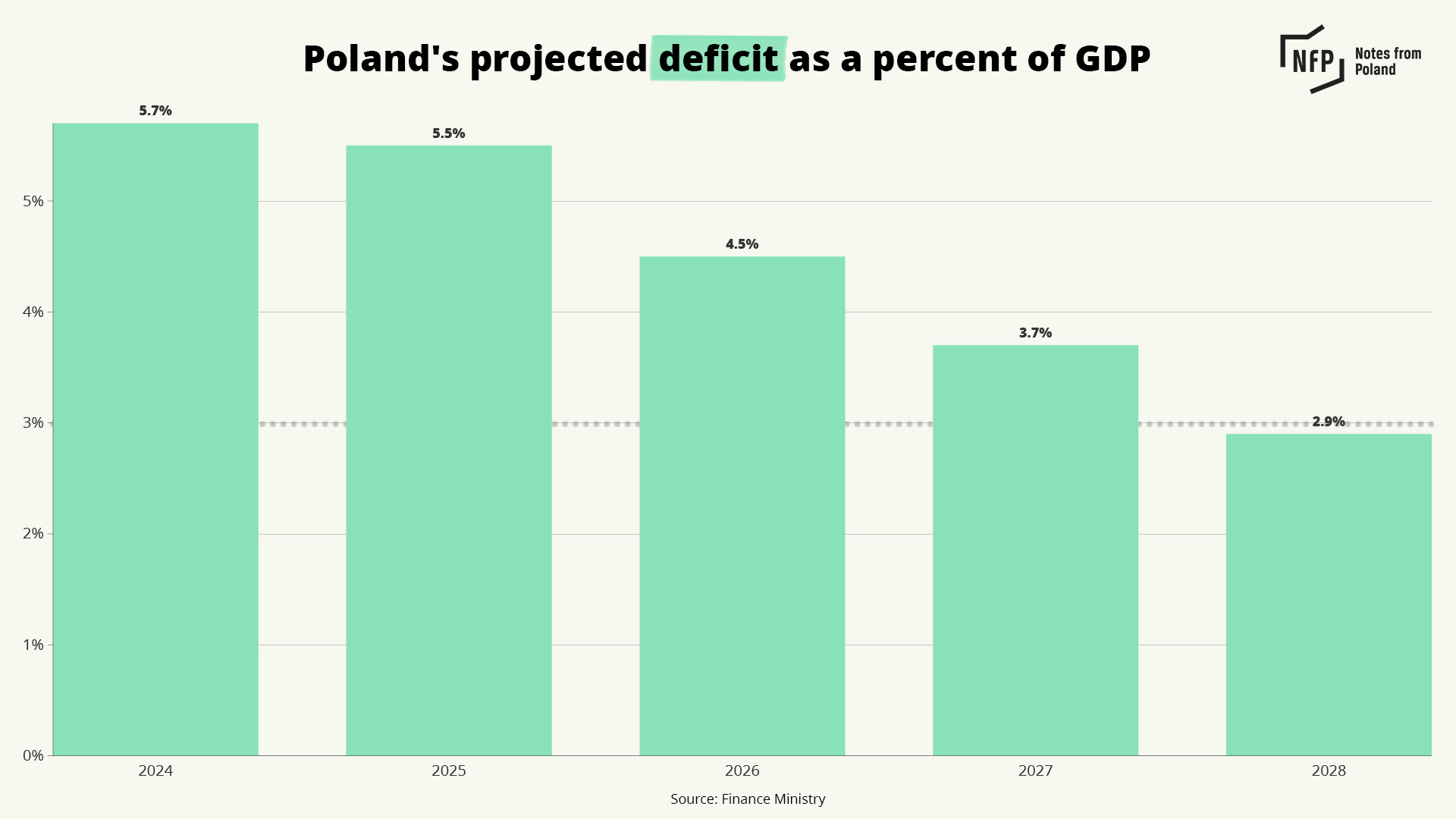Poland sets out plan to bring deficit below EU’s 3% limit

We don’t disrupt your reading with ads or paywalls, but this is only possible with the support of our readers – click here to make a donation today!
Notes from Poland is run by a small editorial team and is published by an independent, non-profit foundation that is funded through donations from our readers. We cannot do what we do without your support.
The government has outlined a plan to reduce Poland’s deficit after the country was placed under the EU’s excessive deficit procedure in July.
Under the procedure – which was also introduced against six other EU member states – Poland was required to present a plan in the autumn setting out a medium-term path of between four and seven years for bringing its deficit – which last year stood at 5.1% of GDP – to below the EU’s target of 3%.
According to the plan adopted by the Polish government on Tuesday, it will take the fastest possible route, bringing the deficit down to 2.9% by 2028.
“The four-year path is a faster exit from debt, greater credibility with the markets,” said finance minister Andrzej Domański, quoted by broadcaster TVN. The plan will still be subject to the approval of the European Commission.

Under the plan, Poland’s debt will rise above the EU limit of 60% in 2026, and remain above it for three years, but will then return below the threshold by 2030.
Poland’s deficit rose above 3% in recent years due to increased spending during the coronavirus pandemic and following the outbreak of war in neighbouring Ukraine.
Due to these external headwinds, the EU froze its fiscal policy guidelines between 2020 and 2023 but returned to enforcing them this year.
In July, the European Commission launched an excessive deficit procedure against Poland and six other EU member states – France, Italy, Belgium, Hungary, Malta and Slovakia – who also had deficits above 3% (as high as 7.4% last year in Italy).
The EU has launched its excessive deficit procedure against Poland and six other member states, which must now prepare plans to get their finances back on track.
The other six countries are Belgium, France, Italy, Hungary, Malta and Slovakia https://t.co/Qkv2b57sa7
— Notes from Poland 🇵🇱 (@notesfrompoland) July 26, 2024
The plan presented to the EU in the autumn does not need to include detailed action. But Domański said that Poland will rely, in particular, on “growing out of the deficit” and on taking measures to increase revenue, “such as excise duty and minimum [corporate income] tax.”
“Poland currently has the highest economic growth dynamics in the EU,” said the finance minister. “In 2025, we expect to be one of the fastest growing economies in the European Union. We do not want to allow the excessive deficit procedure to limit our growth.”
His ministry notes, however, that “the need to deliver high defence spending” during the implementation period of the plan will be “a significant challenge”. Poland plans to raise the defence budget to a record 4.7% of GDP next year, the highest level in NATO.
Sorry to interrupt your reading. The article continues below.

Notes from Poland is run by a small editorial team and published by an independent, non-profit foundation that is funded through donations from our readers. We cannot do what we do without your support.
Under the budget approved by the government in August, Poland was expected to have a deficit next year of 7.3% of GDP. However, the plans approved this week envision a much lower figure of 5.5% in 2025, followed by 4.5% in 2026, 3.7% in 2027 and 2.9% in 2030.
Meanwhile, Poland’s debt-to-GDP ratio is projected to reach 54.6% in 2024 and 58.4% in 2025. It is expected to rise and peak at 61.3% in 2027, mainly due to high defence spending.
The European Commission will have approximately six weeks to assess Poland’s plan and prepare a draft recommendation on a spending path for Poland and other countries covered by the excessive deficit procedure.
The EU Council, following the commission’s assessment of the plan, will recommend a binding spending path for subsequent budget laws.
The size of next year’s record 289 billion zloty (€67.3 billion) deficit – part of the 2025 budget unveiled by the government yesterday – compared to recent years.
Via TVN24: https://t.co/J1NodbmlKk. pic.twitter.com/VNapLtZzRv
— Notes from Poland 🇵🇱 (@notesfrompoland) August 29, 2024
Main image credit: Krystian Maj/KPRP (under CC BY-NC-ND 3.0 PL)

Alicja Ptak is senior editor at Notes from Poland and a multimedia journalist. She previously worked for Reuters.






